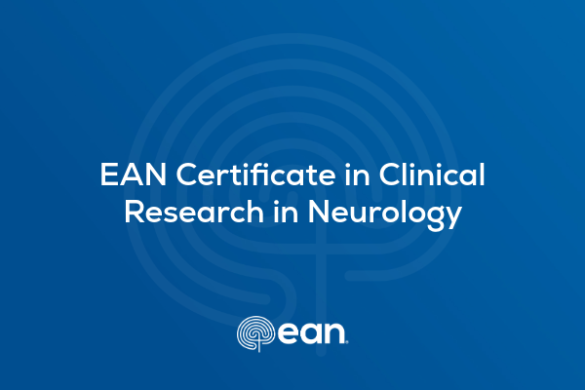Dear Readers,
Let us take this opportunity and invite you to read articles which have been carefully chosen by our Scientific Panels Autonomic nervous system disorders , Higher cortical functions, Infectious diseases, Movement disorders, Neuroepidemiology & Palliative care:
- Squair JW, le Nobel G, Noonan VK, Raina G, Krassioukov A. Assessment of clinical adherence to the international autonomic standards following spinal cord injury . Spinal Cord 2015; 53 (9): 668–672.
Spinal Cord Injury (SCI) at or above the sixth thoracic vertebral level (T6) may result in the damage of descending autonomic pathways and alter the parasympathetic and sympathetic control of almost every body system, including the heart, blood vessels, respiratory tract, sweat glands, bowel, urinary bladder and sexual organs. The most serious complication is autonomic dysreflexia (AD), in which a noxious stimulus below the level of injury, such as a blocked catheter or bowel distension, triggers an episode of extreme hypertension. The blood pressure dysregulation contributes to a threefold increased risk of cardiovascular disease and is the leading cause of mortality in patients with SCI.
In two reviews and an analysis of current medical practice, Professor Andrej Krassioukov and his team at the University of British Columbia, Canada have updated our knowledge about autonomic dysreflexia in patients with SCI.
The International Autonomic Standard for SCI patients was established in 2009 and offers a convenient and useful tool to carefully screen autonomic body functions:(http://www.asiaspinalinjury.org/elearning/ASIA_Auto_Stan_Worksheet_2012.pdf).
Squait et al. showed that although autonomic dysfunction in SCI can be easily screened by this autonomic dysreflexia still is an under-recognized condition in patients with spinal cord injury. In their analysis of the adherence to international standards in clinical practice they found that a third of SCI patients was not screened for autonomic dysreflexia when admitted to rehabilitation therapy.
- Wecht JM, La Fountaine MF, Handrakis JP, West CR, Phillips A, Ditor D. Autonomic Nervous System Dysfunction Following Spinal Cord Injury: Cardiovascular, Cerebrovascular, and Thermoregulatory Effects . Current Physical Medicine and Rehabilitation Reports 2015; 3(3): 197-205.
Wecht and coauthors carefully reviewed the scientific literature and updated our knowledge about the autonomic dysfunctions in SCI. Research has shown that SCI is specifically associated with changes of spinal sympathetic neurons and primary afferents. Recent studies provided additional evidence for an altered sensitivity of alpha-adrenergic receptors of the sympathetic nervous system. After urinary, bowel and sexual dysfunctions which are present in almost all individuals with SCI is the failure of blood pressure regulation a very common complication of SCI. The sudden increase in systolic BP of greater than 20–30 mmHg is considered a dysreflexic episode. Untreated episodes of AD may have serious consequences, including intracranial hemorrhage, retinal detachment, seizures and death.
If correctly identified symptoms of AD can be treated with relative ease. In her review article, Helen Cowan presents a practical and easy to apply algorithm for the immediate treatment of autonomic dysreflexia with hypertensive crisis.
Clinicians are strongly encouraged to assess basic autonomic functions after SCI as standard clinical practice. Patients with spinal cord injury and their families should be educated to monitor blood pressure, to recognize the early symptoms, and to avoid trigger of autonomic dysreflexia.
Christina Haubrich, MD, PhD
Associate professor of Neurology
RWTH Aachen University
Visiting professor Brain Physics Laboratory
Member of Clare Hall College
University of Cambridge
EAN Scientific Panel Autonomic nervous system disorders
***
- Xing s, Lacey EH, Skipper-Kallal LM, et al. Right hemisphere grey matter structure and language outcomes in chronic left hemisphere stroke. Brain 2016; 139 (1): 227-241.
The topic of the neural correlates of spontaneous or rehabilitation aided recovery language after left hemisphere stroke is a classic issue of behavioral neurology. The traditional view, i.e that the right hemisphere can compensate for damage in left hemisphere language areas has been questioned by more recent, imaging based evidence suggesting an important role of reorganization within the spared specialised left hemispheric areas. The present paper, based on sophisticated quantitative analysis of structural MR data, provides some interesting (an surprising) novel data. The comparison between thirty-two left hemisphere stroke aphasia patients and 30 demographically matched healthy controls showed that grey matter volumes in right temporo-parietal clusters were greater in stroke survivors with aphasia compared to those without history of aphasia. The neurobiological underpinnings of what appears to be a compensatory hypertrophy after a stroke causing aphasia are clearly in need of further investigation.
Stefano F. Cappa, MD, Prof
2nd Department of Neurology
Ospedale San Raffaele – Vita-Salute San Raffaele University
Italy
Co-chair, EAN Scientific Panel Higher cortical functions
***
- Singh TD, Fugate JE, Hocker S, et al. Predictors of outcome in HSV encephalitis. Journal of Neurology 2015: 1-13. [Epub ahead of print]
Herpes simplex virus encephalitis is a potentially fatal disease and neurological sequels are often present among survivors. The study by Singh and co-workers explored clinical features, radiological findings and management issues which determine prognosis in PCR-confirmed HSE. They studied 45 patients with HSE (HSV-1 n=33, HSV 2 n=9) and good outcome 6-12 months later was seen in 66%. Twenty-two percent of the patients developed HSE under immunosuppression and 60% were admitted to the intensive care unit. Hospital mortality was 16%.
Older age, development of coma, presence of restricted diffusion on brain MRI and delay in the administration of acyclovir were associated with poor outcome. Remarkably, the presence of seizures, focal neurological deficits, EEG abnormalities and location or extension of FLAIR/T2 abnormalities did not determine functional outcome. The findings confirm on the one hand that the prognosis of HSE has improved over time (1). A further advancement by this study, on the other hand, is the prognostic relevance of DWI lesions. Such lesions are attributed to cytotoxic edema and were present in more than two-thirds of patients with poor outcome.
Taken together, this study corroborates the impact of quick initiation of antiviral treatment not only on mortality but also on the functional outcome of HSE and disclosed additional risk factors for poor outcome. Further studies, however, are mandatory to assess prognostic factors for the development of immune-mediated encephalitis in the aftermath of HSE (2).
(1) Sili U, Kaya A, Mert A; HSV Encephalitis Study Group. Herpes simplex virus encephalitis: clinical manifestations, diagnosis and outcome in 106 adult patients. J Clin Virol. 2014 ; 60 (2):112-8.
(2) Armangue T, Moris G, Cantarín-Extremera V, et al. Spanish Prospective Multicentric Study of Autoimmunity in Herpes Simplex Encephalitis. Autoimmune post-herpes simplex encephalitis of adults and teenagers. Neurology. 2015; 85 (20):1736-43.
Johann Sellner MD
Department of Neurology
Christian Doppler Medical Center
Paracelsus Medical University
Salzburg, Austria
EAN Scientific Panel Infectious diseases
***
- Chen D-H, Méneret A, Friedman JR, et al. ADCY5-related dyskinesia: Broader spectrum and genotype–phenotype correlations. Neurology 2015; 85: 2026-2035.
Two specific mutations of adenylate cyclase 5 (ADCY5), which is highly expressed in the striatum, have been previously associated with complex movement disorders: while p.A726T was found in patients with autosomal dominant dyskinesia with facial myokymia and increased reflexes, p.R418W was described in 2 sporadic cases with axial hypotonia, chorea, myoclonus, dystonia, and facial movements (without myokymia).
In the present paper Chen expand their research on ADCY5 mutations and clinical correlations. Patients were screened and enrolled at multiple centers, and ADCY5 mutations were found using either clinical whole exome sequencing or targeted gene sequencing. Shared ancestry was investigated for 2 families by determining haplotypes surrounding ADCY5. Short tandem repeat markers (STRPs) were genotyped, followed by sequencing of three introns containing informative single nucleotide polymorphisms (SNPs). Mosaicism for ADCY5 mutations was also looked for.
Eighteen new families are described, suggesting that the prevalence could be higher than previously imagined. In summary, the authors found that ADCY5 mutations in the cytoplasmic domains cause a childhood-onset mixed hyperkinetic disorder (chorea, dystonia, myoclonus). Clinical progression is slow or null, and patients are often misclassified (e.g. cerebral palsy, benign hereditary chorea, paroxysmal dyskinesia). Clinical features that might point to the right diagnosis include axial hypotonia, facial chorea or dystonia, nocturnal paroxysmal dyskinesia, movement-related pain, pronounced fluctuations in severity and frequency of the movements, absent or mild cognitive impairment, and normal MRI. C1b domain mutation A726T or mosaicism were associated with milder disease, while mutations in C1a and C2a cause a moderate to severe condition. The authors propose that the broader designation “ADCY5-related dyskinesia” replaces the older term “Familial Dyskinesia with Facial Myokymia” (FDFM).
- T. Wu, J. Zhang, M. Hallett, T. Feng, Y. Hou, P. Chan. Neural correlates underlying micrographia in Parkinson’s disease. Brain 2016; 139; 144–160.
In this functional magnetic resonance imaging study, the authors try to clarify the neurophysiological mechanisms of micrographia, a common but poorly understood symptom of Parkinson’s disease (PD). Two forms of micrographia are seen in PD: consistent micrographia, a global reduction in writing size compared with writing before the development of the disease; progressive micrographia, a gradual reduction in size during writing. This study demonstrates that consistent micrographia is associated with decreased activity and connectivity in the basal ganglia motor circuit; nevertheless, progressive micrographia involves disconnections between the rostral supplementary motor area, rostral cingulate motor area and cerebellum, beyond dysfunction of basal ganglia motor circuit. Remarkably, the authors examined also the effect of attention and levodopa. The improvement of micrographia by attention was associated to recruitment of the anterior putamen and the dorsolateral prefrontal cortex; moreover, it was paralleled to increased connectivity between anterior putamen and PMC/caudal SMA (consistent micrographia) or the pre-SMA/rCMA (progressive microcraphia). Levodopa improved consistent micrographia accompanied by increased activity and connectivity in the basal ganglia motor circuit, but had no effect on progressive micrographia. The authors propose that consistent micrographia is related to dysfunction of the basal ganglia motor circuit; on the other hand, progressive micrographia might be caused by dysfunction of the basal ganglia motor circuit and disconnection between the rostral supplementary motor area, rostral cingulate motor area and cerebellum.
Francesca Morgante, MD, PhD
Department of Clinical and Experimental Medicine, Movement Disorder Unit
University of Messina
Italy
&
João Massano
Department of Neurology, Hospital Pedro Hispano/ULS Matosinhos
Department of Clinical Neurosciences and Mental Health
Faculty of Medicine University of Porto
Portugal
EAN Scientific Panel Movement disorders
***
- Wu Y, Fratiglioni L, Matthews FR, et al. Dementia in western Europe: epidemiological evidence and implications for policy making . Lancet Neurology 2016; 15: 116-124.
The paper I am proposing is a review article on epidemiology of Dementia in western Europe and its implication for health system policy decision- making. The paper summarizes evidence from population-based descriptive studies carried out in Europe by adopting the same method, and provides data indicating a possible decrease in dementia occurrence over time. Such reductions could be the outcomes from earlier population-level investments such as improved education and lifestyles and better prevention and treatment of vascular and chronic conditions. This underlines the potential impact of preventive strategies throughout life to reduce dementia risk.
Ilaria Casetta, MD, Assist. Prof
Section of Neurological, Psychiatric and Psychological Sciences
Department of Biomedical and Specialty Surgical Sciences
UNIFE
Italy
EAN Scientific Panel Neuroepidemiology
***
- de Boer ME, Depla M, Wojtkowiak J, et al. Life-and-death decision-making in the acute phase after a severe stroke: Interviews with relatives. Palliative medicine 2015; 29 (5): 451-457.
The care of a person with an acute stroke can be a very difficult time for all concerned and decisions may need to be taken quickly that can influence the later care – this may be for increased treatment leading to intensive care and prolonged survival, but with severe disability later, or the reduction in active treatment that may result in the death of the person.
A paper from Amsterdam has looked at this area of care. They interviewed 15 relatives of people with an acute stroke and found issues including
- Making decisions – the families felt overwhelmed and under pressure of time to decide on treatment and tended to act on a reflex, which may not have reflected their own views or those of the patient
- They felt they would prefer the physician to decide
- They felt reluctant in saying “let her die” even though they felt this might be the correct decision
- Sudden and unexpected change, including unexpected improvement, added to the complexity of decision making
They suggest that physicians need to be aware of the experience of families that may affect decision making and they need to look at ways of ensuring families are really involved in these decisions, so that they reflect the family and the patient’s views. As families may ask, overtly or without realising, physicians to make the decisions it is important for the physician to carefully involve and reflect on the patient and family’s views. This may allow a fuller discussion and improved decision making, including discussion of palliative care and the dying process.
Although this paper relates specifically to stroke patients the principles may be applied within the care of other neurological disease, although the urgency of decision making may be less pressurised when there is a slower progression. All involved in decision making need to be aware of the wider issues within families and the need to facilitate the patient and their family in these complex issues.
David Oliver, MD
Consultant in Palliative Medicine
Honorary Reader, University of Kent
Wisdom Hospice, Rochester, UK
Co-chair of Scientific Panel Palliative Care










